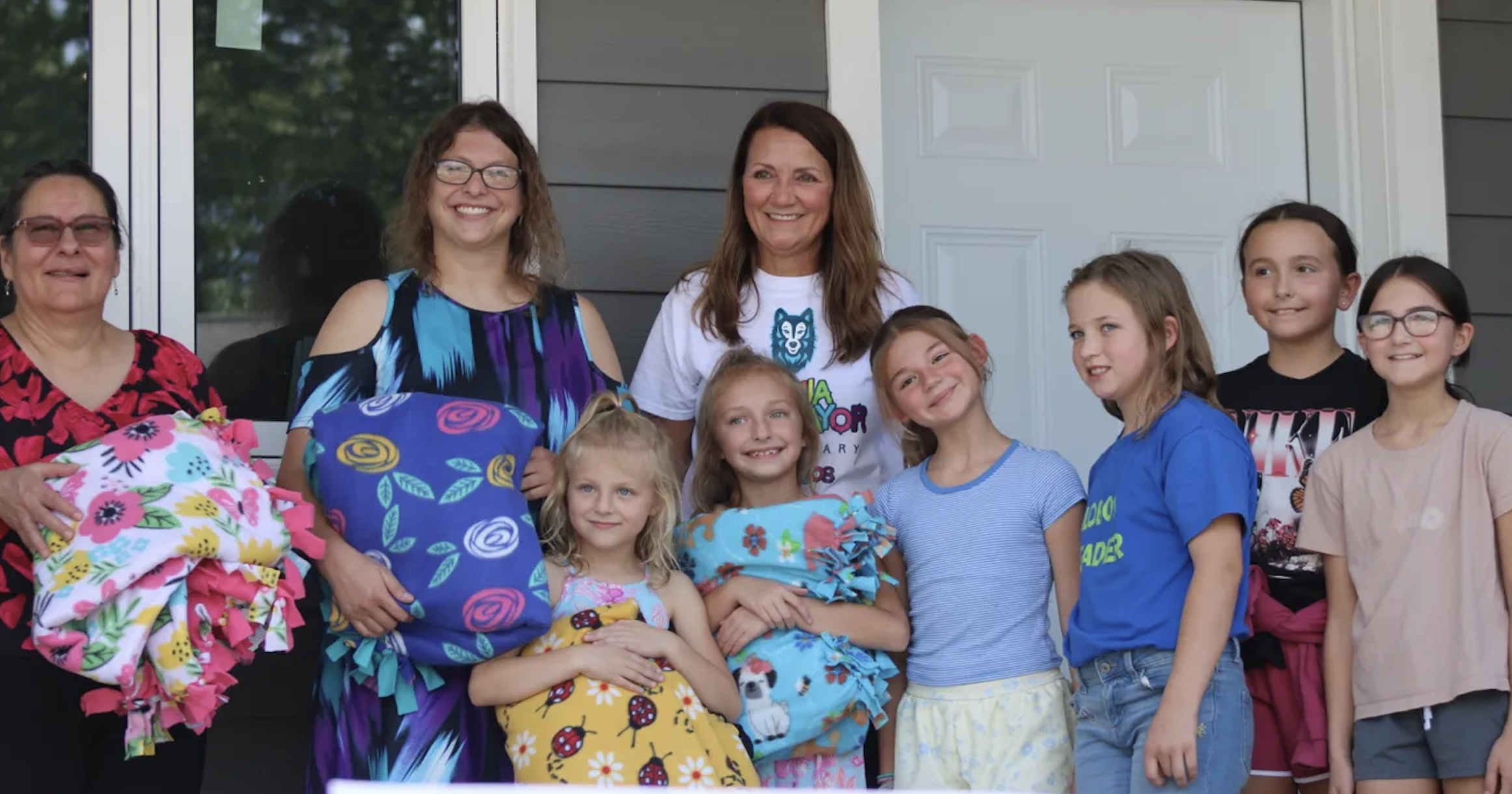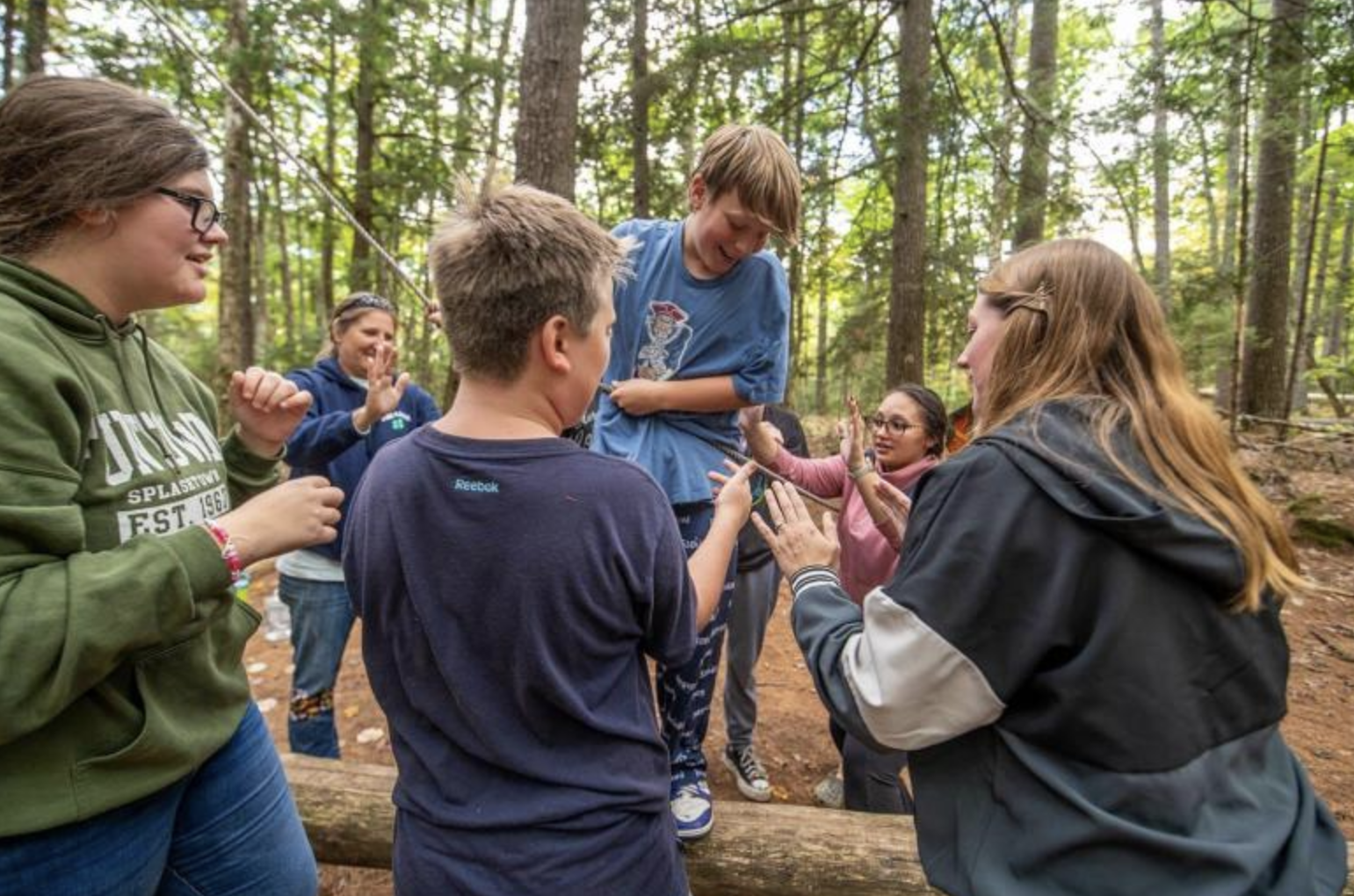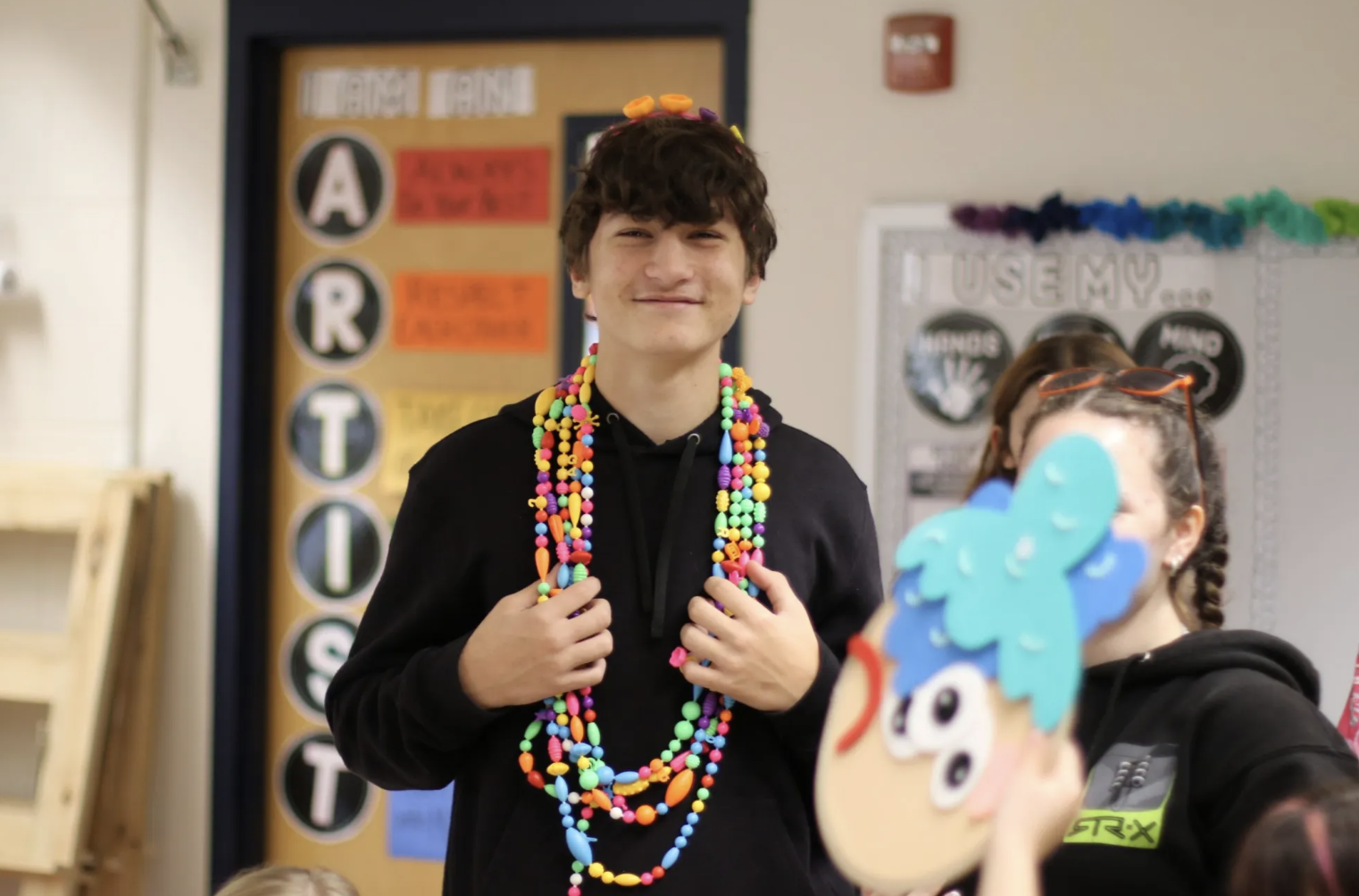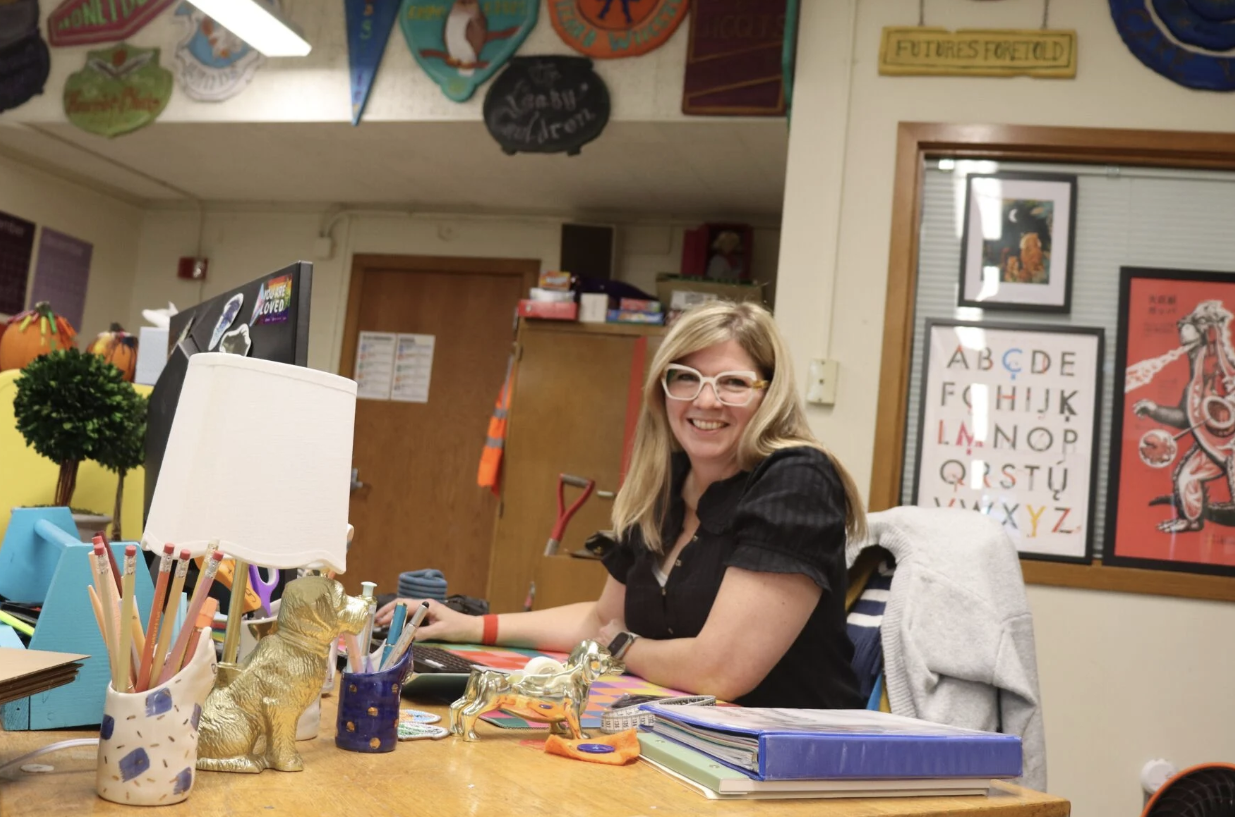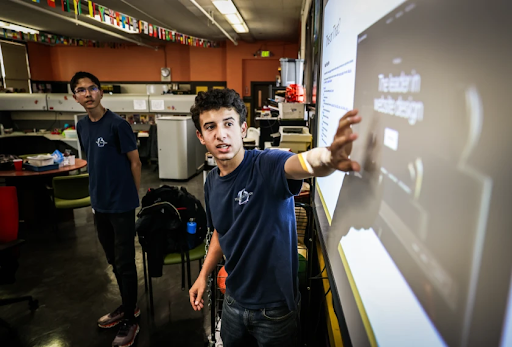Jump to: Top Tasks | From the Field | Key Resources | Moments of Resilience
It is week 280 in our new reality and we are thinking about college for all.
“In the early 20th century, regardless of your family’s income, you could be fairly confident that enrolling in college would provide a solid bump to your wages a few years down the line. And back then, the returns were the same for both rich and poor students,” writes Julien Berman in the Washington Post. “That’s no longer the case. Wealthy college-goers now earn a premium nearly three times larger than the one earned by low-income students, according to economists Zachary Bleemer and Sarah Quincy, who collated more than a century of government records and surveys to measure the returns of education over time. For low-income students, those returns are half as large as they once were.”
SUBSCRIBE
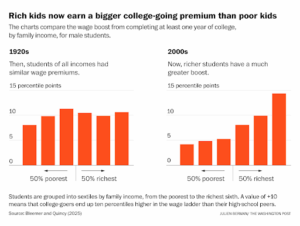
What changed? As the percentage of low-income students going to college increased, “graduation rates have plummeted, and dropout rates for low-income students have increased.” At the same time, our failures in the K-12 system caught up with us. Low-income students who didn’t properly master the foundations of math and science in high school found themselves locked out of the most lucrative majors in college: “For example, engineering schools often have separate applications, and they require higher test scores and grade point averages,” Bernman points out. “Some STEM programs also expect students to arrive having completed prerequisite coursework.”
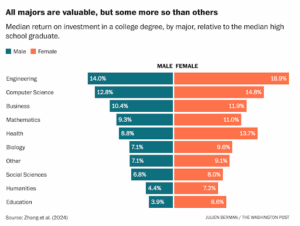
The bottom line? We took a lot of shortcuts as a nation to try to reach the goal of college for all, and low-income students paid the price. College can be a pathway to a better life but only if students are actually prepared for college. Pretending we prepared them and hoping for the best doesn’t work. Which brings us right back to K-12 education reform and the importance of Believing in Better.
Last time in the New Reality Roundup, we looked at JerseyCAN’s efforts to expand pathways to college and examined new polling out of Tennessee that showed deep support for Believe in Better.
This week, we check in on the continued evolution of summer programming that started with the pandemic and take note of how a small legislative change in Georgia is having outsized effects.
TOP TASKS
Embrace summer as a unique part of the education system of tomorrow
The United States has one of the longest summer breaks in the world. For example, it’s 50% longer than the time off students have in France and Ireland and twice as long as the time off for students in the UK and Germany. While most attempts to extend the school year in the US have failed, a new push to make better use of summer is taking off.
One approach we are proud to help support through our Build program is called Summer Boost. With the leadership of Bloomberg Philanthropies, over the past four years charter schools across the country have provided free summer programming for their students, with a particular emphasis on helping catch kids up from Covid learning losses. The results, as reported in the latest annual report from Bloomberg Philanthropies: “Independent program assessments found a 20 percentage point increase in math proficiency and 18 percentage point increase in English proficiency.”
Another promising program that emerged after the pandemic school closures is Summer Rising, which was created in 2021 through a partnership between New York City Public Schools and the Department of Youth and Community Development. It mixes free extracurricular activities with free academic support through a six week program during New York City’s summer break.
Summer Rising and similar programs in other cities across the country are the subject of a new piece in The 74 by Amanda Gedlud, who examines the changing nature of summer programming as educators work to expand opportunities for students. “New York City is one of scores of districts across the nation who have worked to transform traditional summer school into a more inclusive, enrichment-filled yet still academically rigorous space,” Amanda writes.
Kevin Bowles, one of the school leaders Gedlund interviews, witnessed the change firsthand: “Kids didn’t want to be there,” Bowles said, reflecting on what went wrong with summer school prior to 2021. “With Summer Rising, even from that first summer, it felt more like an opportunity for students,” Bowles said, “versus something that we were forcing just a small number of kids because they had quote, unquote, failed … We had enormous demand.”
That demand has continued. In fact, New York’s Summer Rising has become so popular that even with 110,000 summer seats offered this year, there are still nearly 30,000 students on the waiting list.
THE TASK OF THE WEEK IS
Learn from Georgia’s sticks and carrots on charter schools
“Seven years is a really long time, especially with the pace of change in our education system right now,” Michael O’Sullivan, Executive Director of GeorgiaCAN, reflects. “The last time Georgia’s districts approved a charter school application was in 2018. Now, we’ve had two new approvals in less than a month, and that’s hopefully a sign that the system is listening to families.”
The new approvals are the direct result of SB82, one of GeorgiaCAN’s legislative wins earlier this year. The new law incentivizes districts to explore partnerships with charter schools by providing $750,000 over three years for each charter application a local district approves, shifting what was once a zero-sum competition for filled seats into a win-win frame.
“Having a broad range of options to choose from in deciding where to educate your daughter or son is important, but districts don’t always see it in the same light,” Michael explained. “And because we know this is the right thing to do, we saw an opportunity to change up the incentives to get the approval jam unstuck.”
That change appears to be working: the new law took effect at the beginning of this month and three weeks later, two charter schools have been approved in separate districts, one in Clayton County serving students with special needs and another in Richmond, which has modeled their charter on a number of successful microschools across the country.
In addition to that carrot, the new law also contains a stick: districts that repeatedly deny high-quality charter applications as a tactic of staving off competition will have their waivers that provide them with flexibility in operations altered or removed.
“There aren’t many bad actors, but there are more than zero which is the only number I’d be comfortable with,” Michael told us. “There’s some teeth to this new law that hopefully won’t have to be used. When your decision point is hundreds of thousands of dollars for your district or losing flexibility in your operations, that isn’t a tough call to make.”
THE TASK OF THE WEEK IS
FROM THE FIELD
We are excited to share that pre-orders are now open on Amazon for The Future of Tutoring: Lessons from 10,000 School District Tutoring Initiatives, a new book by 50CAN VP of Policy Liz Cohen being published by Harvard Education Press in October. The early reviews are already in and they are great! Here is what Rick Hess has to say: “Education is full of fads. What will it take to ensure that tutoring doesn’t become one more cautionary tale? A great first step is to read Liz Cohen’s savvy, engaging new book. Cohen has penned the cheat-sheet on what it will take for tutoring to deliver on its promise.”
This Thursday at 3pm ET, the Campaign for Grade Level Reading will host a conversation with 50CAN’s Derrell Bradford, ExcelinEd’s Michael Chartier, CRPE’s Robin Lake and the Century Foundation’s Halley Potter for a discussion moderated by PPI’s Bruno Manno, on the balance of choice and accountability. RSVP to attend.
50CAN President Derrell Bradford and VP of Communications Ned Stanley will both present at next week’s second annual VELACon, with Derrell keynoting the conference and Ned speaking to school founders on maximizing their local media coverage.
Key Resources
Bella DiMarco at FutureEd analyzes eight universal private‑school choice states: 2024‑25 participation jumped 40 percent to 805,000 students as program support rose to $5.75 billion.
Stéphane Lavertu and Tim Rosenberger in Fordham’s Flypaper argue that post‑pandemic growth in charters, vouchers, ESAs, homeschooling and AI tools has opened a window for education dynamism, but warn efforts could stall without strong school autonomy and transparent data.
The Freedom Coalition for Charter Schools is now Freedom to Choose Schools, and they recently launched the “Choice Words” podcast, giving parents a platform to explain how new ESAs are shaping their children’s learning.
A new study by Kathleen Lynch, Catherine Armstrong Asher, Amelia Gotwals and John Settlage published by EdWorkingPaper reports that classroom science interventions in pre‑K–1 significantly boost young children’s science and literacy skills.
Urban Institute examines college and career indicators across the country, finding 42 states use at least one measure, nine use none, and benchmarks vary widely.
Mark Schneider, Matt Sigelman, Shrinidhi Rao and Scott Spitze at AEI propose tying public dollars for short‑term and nondegree credentials to career earnings, warning that without strong outcomes, we risk funding low‑value programs.
Moment of Resilience
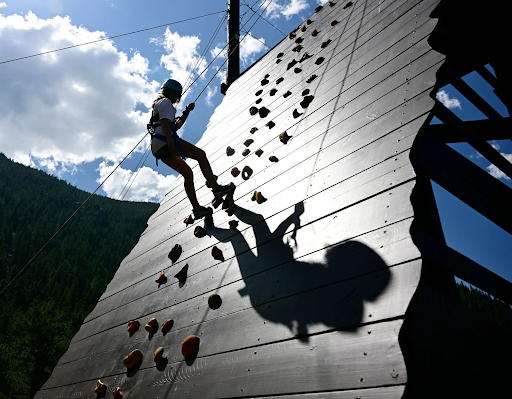
oing what lots of kids do in the state: hiking, kayaking and climbing across the Rocky Mountains. Camp Comfort, however, provides a unique service: the camp’s students share the experience of having recently lost a parent or family member. Camp Comfort couples outdoor adventures with time to connect, reflect and heal from loss. Profiled by the Denver Post, the camp offers not just a moment but an entire summer of resilience for kids.


